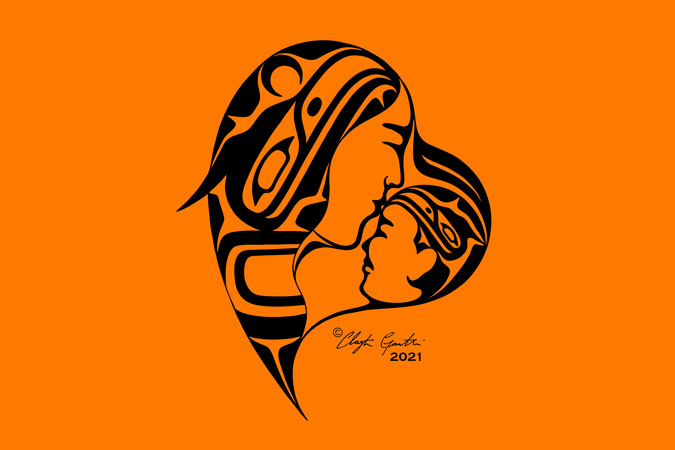
Warning: This story contains content that could be triggering. For mental health or crisis support, please contact the KUU-US Crisis Line at 1-800-588-8717 or click here for FNHA's mental health and wellness support services.
The end of September is highly important to First Nations people in Canada, as we observe Orange Shirt Day and remember the horrific legacy of residential schools. Started in 2013 in Williams Lake, BC, Orange Shirt Day on Sept. 30 has grown over the past 10 years to signify resilience, strength and healing for survivors and their families. It is also a reminder to all Canadians to learn about this history and the truth so it is never repeated.
Since the discovery of unmarked graves on the site of former residential schools throughout Canada, the orange shirt has become a colour that is often worn at any time of year to signify the ongoing and intergenerational traumas caused by Canada.
But why orange? Why was this colour chosen to represent this story?
The story begins in 1973 with Phyllis Webstad of Northern Secwpemc (Shuswap) from the Stswecem'c Xgat'tem First Nation (Canoe Creek Indian Band). She had just turned six years old and was living with her grandmother on the Dog Creek reserve.
When she was told she had to go to St. Mary's Residential School in Mission, BC, she was excited at first. She went to Robinson's store and picked out a shiny, new orange shirt.
“It had string laced up in front, and was so bright and exciting – just like I felt to be going to school!" said Phyllis, in telling her story.
However, when Phyllis arrived to the Mission school, they stripped her of her clothing, and her new orange shirt. She never wore it again.
“I didn't understand why they wouldn't give it back to me, it was mine! The color orange has always reminded me of that and how my feelings didn't matter, how no one cared and how I felt like I was worth nothing."
Orange Shirt Day is a legacy of this story and part of a commemoration project and reunion that took place in Williams Lake in 2013. Esketemc (Alkali Lake) Chief Fred Robbins, a former student at St. Mary's as well, brought together other former students and their families from the Secwepemc, Tsilhqot'in, Southern Dakelh and St'at'imc Nations along with the Cariboo Regional District, the Mayors and municipalities, School Districts and civic organizations in the Cariboo Region.
Stories like Phyllis' are essential in documenting and bringing to light the injustices and abuses committed by Canada's colonial government against Indigenous peoples, and in ensuring truth is an essential component in reconciliation.
Due to the efforts of Orange Shirt Day, in 2021 the Government of Canada passed a bill designating Sept. 30 a statutory federal holiday called “National Day for Truth and Reconciliation." The day, however, is not meant to simply be an opportunity to take a day off work or school and relax. It was number 80 of 94 calls to action in the final report of The Truth and Reconciliation Commission (2008-2015), so that Canadians could spend a day learning and reflecting.
There were 140 federally run residential schools in Canada that began shortly after implementation of the Indian Act (1867) and the last one did not close in 1996. Survivors like Phyllis have long called for recognition, reparations and accountability for the intergenerational harms that have been inflicted on families, communities and culture.
Phyllis' story matters, as does every child who attended residential schools in Canada. Every Child Matters. Orange Shirt Day is an enduring symbol that we will never forget.
Further Learning
There are many ways to learn more about Canada's history with Indigenous people, these are some suggestions to get started.
Truth:
Reconciliation:

